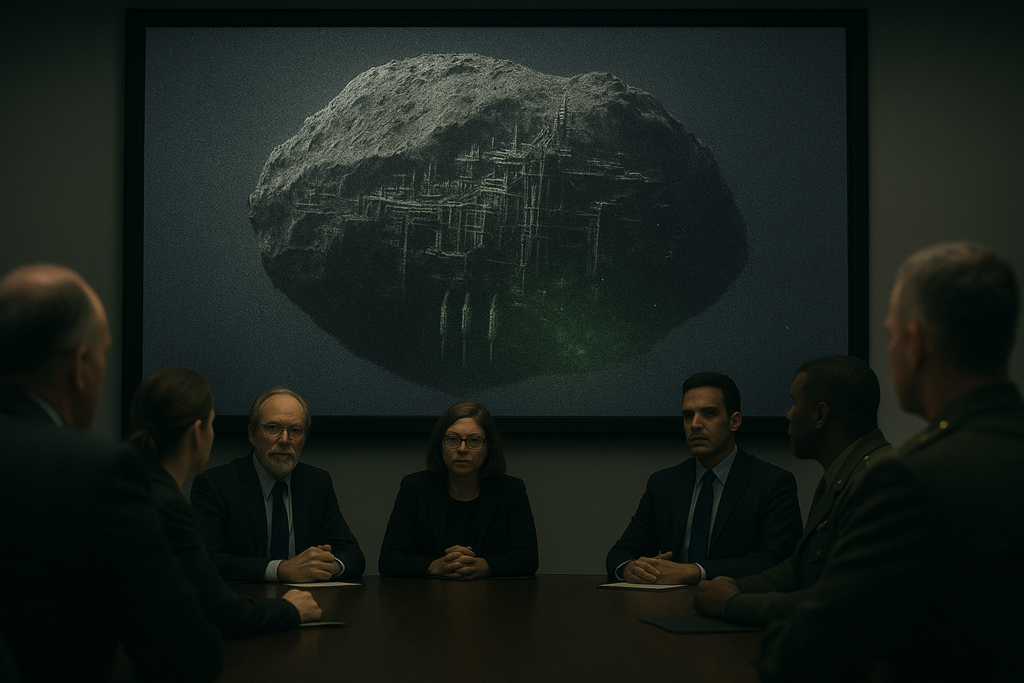Chapter 5 – Vanishing Behind the Sun
At first, there was awe.
The anomaly designated 3I/Atlas grew steadily brighter, becoming the most talked-about object in the night sky. In late August, the Hubble Space Telescope captured images of its radiance doubling week after week. By September, the James Webb reported an even stranger revelation: the object’s spectral signature no longer matched inert rock. Instead, it showed traces of nickel, cyanide compounds, and exotic alloys, far richer than anything found in a comet. Its glow had shifted from ruddy orange to a disturbing emerald-green pulse that no one could explain.
But the strangest revelation of all was the tail. Every comet in history carried its trail away from the Sun, solar wind pushing dust and gas into a streaming veil. Not Atlas. Its tail pointed inward, toward the Sun itself, as if the object were not being pushed but actively venting—firing—against the solar wind.
Theories abounded. Some scientists proposed exotic magnetic effects. Others speculated it was an interstellar craft, a thought too audacious to publish but whispered across private forums. A growing number of conspiracy theorists insisted this was proof of alien design.
And then, at the end of September, Atlas disappeared. Not in truth, but in sight. As its trajectory swung behind the glare of the Sun, the telescopes fell blind. For ten weeks, Earth would have no eyes on it. Ten weeks of silence, until December, when it would emerge again on the far side.
The waiting was unbearable. Journalists speculated, governments issued carefully worded statements, astronomers spoke in clipped tones on late-night interviews. The public felt the weight of helplessness—knowing something immense was approaching, yet powerless to act or even see.
In early October, another blow came. Mars’s orbital network went dark. All seven Earth-made satellites, from dusty mapping platforms to state-of-the-art reconnaissance orbiters, failed in rapid succession.
At first, it was assumed to be natural. Perhaps a massive burst of radiation. Perhaps meteoric debris. Perhaps coincidence. But the timing was too perfect. Every one of the orbiters had been primed to watch Atlas as it drew near Mars in November, offering humanity its only close-up chance. Now, all eyes were closed.
Yet not before one of them, a fading, aging orbiter, transmitted a final image. Grainy, over-compressed, corrupted in half its frame—but unmistakable. Floating against the black was the silhouette of a massive structure. Metallic ribbing, lattices, geometry that no rock ever wore. It looked like a city grafted onto an asteroid, or a ship dressed in stone.
The image leaked before censors could contain it. It spread across forums and news outlets within hours, dissected and argued over by millions. Many dismissed it as fraud, an AI-generated fabrication. Others swore it was the proof humanity had been waiting for.
But within certain secure channels, among scientists and defense councils, the truth was acknowledged with grim silence. The image was real. And the thing humanity had named Atlas was not natural.
It was deliberate.

